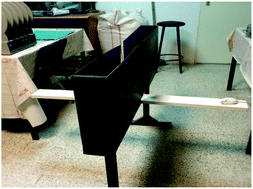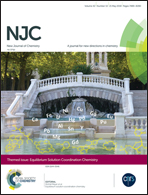Synthesis of curcumin complexes with iron(iii) and manganese(ii), and effects of curcumin–iron(iii) on Alzheimer's disease†
Abstract
Plants provide a wealth of bioactive compounds which aid in exerting a substantial strategy for the treatment of neurological disorders such as Alzheimer's disease and dementia. Here, the metal complexes of the curcumin ligand were synthesized with Mn(II) and Fe(III) salts, and characterized by spectroscopic and analytical methods such as elemental analysis, magnetic susceptibility, FT-IR, AAS, TG and argentometry. Magnetic susceptibility data showed that complexes with 1 : 2 (metal : ligand) mole ratio had octahedral geometry. In vivo studies of the synthesized metal complexes had been carried out on Swiss albino male mice, to study their ability for reducing the accumulation of beta amyloid 25–35 protein which causes Alzheimer's disease. Memory experiments were performed with the plus maze test at behavioural pharmacology laboratory. LP rates of Aβ25–35/curcumin and Aβ25–35/Fe(III) complex groups were 80.79%, 88.21% and 75.35%, 81.71%, respectively. Consequently, the synthesized curcumin iron complex strengthened the memory. It was more effective than curcumin, when their latent period (LP) values were compared.

- This article is part of the themed collection: Equilibrium Solution Coordination Chemistry


 Please wait while we load your content...
Please wait while we load your content...